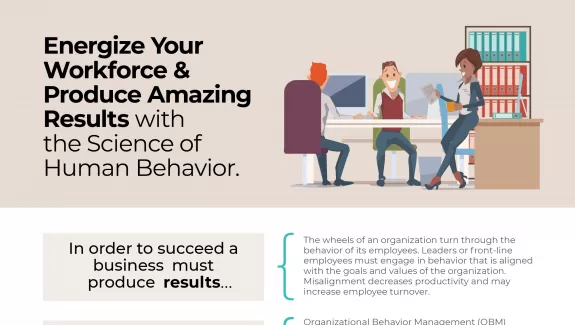
Mysterious Science
Have you ever heard someone you know mention anything about behavior analysis or something along the lines of behavior management? If so, did you ever wonder if they were psychics who can read your mind by simply observing your behavior from afar or figure out your intentions by simply having a conversation with you? What does it feel like? Scary isn’t it? Regardless, if you’ve heard or haven’t heard of behavior analysis (or something along the lines of it) before, allow me to guide you through what actually goes on in the minds of behavior analysts.
What exactly is Behavior Analysis?
Behavior analysis is a natural science (much like biology, chemistry, and physics) that seeks to understand the behavior of individuals. For example, in chemistry, when you mix sodium (Na) and chlorine (Cl), you get sodium chloride (NaCl) which is equivalent to your regular table salt; the same thing happens in behavior analysis. Behavior analysts focus on how biological, pharmacological, and experiential factors influence the behavior of humans and animals. Furthermore, behavior analysis is separated into three branches: applied behavior analysis (ABA), experimental analysis of behavior (EAB), and organizational behavior management (OBM). Acknowledging that behavior is something that individuals do, behavior analysts establish special emphasis on studying factors that reliably influence the behavior of individuals, an emphasis that is effective when the goal is to acquire adaptive behavior or decrease socially inappropriate behavior such as tantrums and aggression (for example, hitting peers, slapping, self-injurious behavior).
 What is Applied Behavior Analysis (ABA) and what is it used for?
What is Applied Behavior Analysis (ABA) and what is it used for?
Applied behavior analysis (ABA) uses behavioral principles that focus on improving specific skills such as social skills, communication skills, as well as adaptive learning skills like hygiene, domestic capabilities, motor skills, and appropriate replacement behavior for problem/challenging behaviors (such as behaviors that hinder social relations, communications and learning of a child and cause harm to them, their families, their peers, and other adults).
What is Organizational Behavior Management (OBM) and what is it used for?
Organizational behavior management (OBM), on the other hand, uses the same behavioral principles to develop desirable behaviors in individuals and/or groups in the workplace. Throughout the years, OBM has resulted in three specialty areas:
- Performance management: This branch focuses on improving performance on the employee level. This used to be synonymous with the term OBM, but it is now its own field, contrasted by specialty areas geared toward other levels of the organization.
 Systems analysis: As the name says, this branch refers to the analysis and modification of organizational processes to benefit the organization. This field focuses on how individuals or groups of workers can complete interdependent tasks that lead to created products or services important to the entire organization.
Systems analysis: As the name says, this branch refers to the analysis and modification of organizational processes to benefit the organization. This field focuses on how individuals or groups of workers can complete interdependent tasks that lead to created products or services important to the entire organization.- Behavior-based safety: This branch is a fast-growing specialty that analyzes and modifies work environments to reduce injuries and promote safe behavior. Instead of targeting safety solely from the standpoint of machinery mechanics and technology, behavior-based safety concentrates on changing employees’ behavior to reduce injuries and make safe performance more common.
So, under what kind of circumstances would behavioral services be needed? If so, how do I know which kind?
 The science of behavior has made breakthroughs that demonstrate the effectiveness in addressing socially important behavior such as drug-taking, healthy eating, workplace safety, education, and the treatment of pervasive developmental disabilities (for example, autism). In Malaysia, ABA is most frequently used as an intervention method for individuals with autism. Autism or Autism Spectrum Disorder (ASD), for those who are unfamiliar with it, is defined by challenges in social and communication skills, either in higher or lower intensity. For those affected, certain behaviors can often be identified, including some or all of the following: delayed language development, eye contact avoidance, repetitive behaviors, and/or lack of capacity to control emotions. Apart from all the clinical settings, behavior analysis can also be used under different conditions (and called a different name under those settings). OBM is often used in business settings. There are two categories of OBM interventions: antecedent-based interventions (things we can do to set up the right environment) and consequence-based interventions (things we can do to tell someone they did great work or provide points/feedback for improvement). Antecedent-based interventions include task clarification, equipment modification, goal setting, prompting, and training.
The science of behavior has made breakthroughs that demonstrate the effectiveness in addressing socially important behavior such as drug-taking, healthy eating, workplace safety, education, and the treatment of pervasive developmental disabilities (for example, autism). In Malaysia, ABA is most frequently used as an intervention method for individuals with autism. Autism or Autism Spectrum Disorder (ASD), for those who are unfamiliar with it, is defined by challenges in social and communication skills, either in higher or lower intensity. For those affected, certain behaviors can often be identified, including some or all of the following: delayed language development, eye contact avoidance, repetitive behaviors, and/or lack of capacity to control emotions. Apart from all the clinical settings, behavior analysis can also be used under different conditions (and called a different name under those settings). OBM is often used in business settings. There are two categories of OBM interventions: antecedent-based interventions (things we can do to set up the right environment) and consequence-based interventions (things we can do to tell someone they did great work or provide points/feedback for improvement). Antecedent-based interventions include task clarification, equipment modification, goal setting, prompting, and training.
- Task clarification involves clearly defining employees’ tasks.
- Equipment modification involves altering equipment used for tasks.
- Goal setting involves setting performance goals and access to rewards.
- Prompting involves prompts to perform or continue performing an activity.
- Training involves identifying and modifying inadequate employee knowledge, skills, or capacity.
Consequence-based interventions include feedback, praise, and monetary and nonmonetary incentives.
- Feedback involves delivering information about past performance to the employee, which can vary according to format (verbal, written, graphic) and delivery agent (manager-supervisor, consultant-researcher, or fellow employee). It is by far the most common intervention used in OBM.
- Monetary and nonmonetary incentives involve money, benefits, or tangible items contingent on performance; in practice and research, they are often combined.
 Just like every amazing field of expertise—medicine, where doctors implement treatments for the benefit of an individual’s health; manufacturing, where workers produce goods that assist in making a lot of areas of our lives easier; service industry, where establishments contribute to increasing our quality of life—behavior analysis can contribute to the betterment of many people’s lives and businesses through the use of systematically changing the tiniest details of the environment and data collection through direct observations; all based on the science of behavior.
Just like every amazing field of expertise—medicine, where doctors implement treatments for the benefit of an individual’s health; manufacturing, where workers produce goods that assist in making a lot of areas of our lives easier; service industry, where establishments contribute to increasing our quality of life—behavior analysis can contribute to the betterment of many people’s lives and businesses through the use of systematically changing the tiniest details of the environment and data collection through direct observations; all based on the science of behavior.
Guest Blogger: Ellee Chin, ABA Technologies CSF Student
Translated by: Shin Yap
神秘科研
您周遭的人是否曾向您提及有关行为分析或类似 “行为管理” 的内容?如果有,那您是否想过,这些出现的人其实是行为学者,通过距离式行为观察或以简单交谈的方式了解你的意图? 感觉怎么样?上述的解说是不是很吓人?无论您之前是否曾听说过行为分析(或类似方法),以下将让您进一步了解行为分析学者的实际想法。
行为分析到底是什么?
 行为分析是一门自然科学(非常类似于生物学,化学和物理学),旨在了解个人的行为。例如,在化学中,当混合钠(Na)和氯(Cl)时,会得到氯化钠(NaCl),它等于普通食盐;行为分析中也会发生同样的“化学作用”。而行为分析师则关注于生物学,药理学和经验因素如何影响人类和动物的行为。 此外,行为分析分为三个分支:应用行为分析(ABA),行为实验分析(EAB)和组织行为管理(OBM)。行为分析师既定行为源自于个人的举止/举动,通过研究特别强调,影响个人行为的重点因素,特别是在受到适应性行为或减少社交上的不适当行为(例如发脾气,被侵略或伤害)时,将出现相关行为(例如:打人、打耳光、自残行为)。
行为分析是一门自然科学(非常类似于生物学,化学和物理学),旨在了解个人的行为。例如,在化学中,当混合钠(Na)和氯(Cl)时,会得到氯化钠(NaCl),它等于普通食盐;行为分析中也会发生同样的“化学作用”。而行为分析师则关注于生物学,药理学和经验因素如何影响人类和动物的行为。 此外,行为分析分为三个分支:应用行为分析(ABA),行为实验分析(EAB)和组织行为管理(OBM)。行为分析师既定行为源自于个人的举止/举动,通过研究特别强调,影响个人行为的重点因素,特别是在受到适应性行为或减少社交上的不适当行为(例如发脾气,被侵略或伤害)时,将出现相关行为(例如:打人、打耳光、自残行为)。
应用行为分析(ABA)及其作用
应用行为分析(ABA)使用行为原则以增强人类的特定技能,例如社交技能,沟通技能,以及适应性学习技能,如卫生、家庭能力、运动技能、以及对于问题 / 挑战的行为,这些技能在不同情况下亦可作为合适的替代行为。(例如:妨碍儿童的社会关系、沟通、学习及各种源自于他们的家庭、同龄人和其他成年人的伤害)
组织行为学(OBM)及其作用
 另一方面,组织行为学(OBM)使用相同的行为原理,在职场领域中的个人和/或群体中建立合宜的行为。 多年来,OBM已在3个专业领域取得了成就:
另一方面,组织行为学(OBM)使用相同的行为原理,在职场领域中的个人和/或群体中建立合宜的行为。 多年来,OBM已在3个专业领域取得了成就:
-
- 绩效管理:专注于提高员工级别的绩效。这曾经是“OBM”的同义词,目前已有自己的专属领域,与其它级别的组织/专业领域形成鲜明对比。
-
- 系统分析:顾名思义,此分支是分析和修改以使组织受益的过程。 该领域专注于个人或群体如何完成相互依赖的任务,从而创造对整个组织重要的产品或服务。
-
- 行为安全:该分支机构的专业是用于分析和修改快速发展的工作环境,减少伤害并促进安全的行为。 基于行为的安全性不是从机械技术和技术的角度来关注安全性,而是着眼于员工行为,以减少伤害并提高安全绩效。
什么情况下需要行为分析服务?并作出正确选择?
 行为科学取得了突破,证明了社会行为,为吸毒、健康饮食、工作场所安全,教育和治疗广泛性发育障碍(例如自闭症)等社会重要行为方面的有效性。 在马来西亚,ABA最常被用作自闭症患者的干预方法。对于不熟悉自闭症或自闭症谱系障碍(ASD)的人来说,将面对社交和沟通技巧的挑战(高或低强度均被定义)。对于那些受影响的人,能够从某些行为中被识别,例如语言发展迟缓、躲避目光接触、重复性行为和/或缺乏控制情绪的能力 (并不是所有患者或患者总会出现该症状)。 除了临床诊治之外,行为分析也可以在不同的条件下使用(不同设置有不同名称),OBM通常用于如上所述的业务设置中。 OBM干预措施分为两类:前提法干预是行为改变前的干预方法(用于建立正确的环境)和基于结果的干预措施(用于告知他人工作上的优秀或需要改进的地方)。
行为科学取得了突破,证明了社会行为,为吸毒、健康饮食、工作场所安全,教育和治疗广泛性发育障碍(例如自闭症)等社会重要行为方面的有效性。 在马来西亚,ABA最常被用作自闭症患者的干预方法。对于不熟悉自闭症或自闭症谱系障碍(ASD)的人来说,将面对社交和沟通技巧的挑战(高或低强度均被定义)。对于那些受影响的人,能够从某些行为中被识别,例如语言发展迟缓、躲避目光接触、重复性行为和/或缺乏控制情绪的能力 (并不是所有患者或患者总会出现该症状)。 除了临床诊治之外,行为分析也可以在不同的条件下使用(不同设置有不同名称),OBM通常用于如上所述的业务设置中。 OBM干预措施分为两类:前提法干预是行为改变前的干预方法(用于建立正确的环境)和基于结果的干预措施(用于告知他人工作上的优秀或需要改进的地方)。
 前提法干预措施包括任务澄清、设备修改、目标设定、提示和培训。
前提法干预措施包括任务澄清、设备修改、目标设定、提示和培训。
-
- 任务澄清包括明确定义员工该执行的任务。
- 设备修改是指更改用于任务的设备。
- 目标设定既是设定绩效目标,然后供于奖励。
- 提示涉及既是给与执行,或继续执行活动的提示。
- 培训既是识别和修改员工的不足,如知识,技能或能力。
基于结果的干预措施包括反馈,表扬以及金钱和非金钱激励措施。
-
- 反馈将涉及向员工提供有关过去绩效的信息,该信息可能会根据格式(语言,书面,图形)和交付代理人(经理-主管,顾问-研究员或同事)而有所不同。 迄今为止,这是OBM中最常用的干预措施。
- 货币和非货币奖励的涉及则取决于绩效的金钱,利益或有形物品; 在实践和研究中,它们经常结合在一起。
就像各个专业领域 – 医学领域,医生为了个人健康而实施治疗; 制造业,工人生产的商品有助于人类的生活变得更加轻松;服务业,为生活质量作出高度贡献。行为分析可以通过直接观察,系统化地更改最细微的环境细节及数据收集,从而改善许多人的生活和业务;这些全部都源于行为科学。



